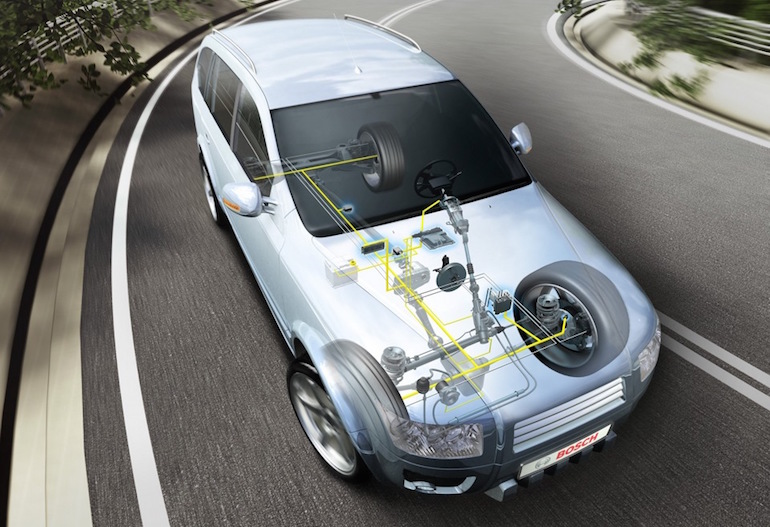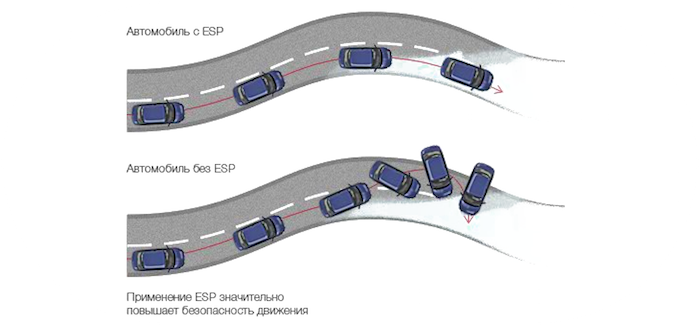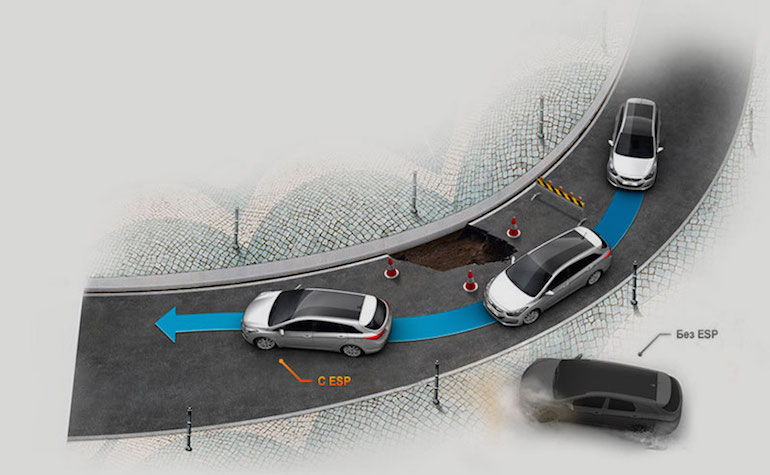
System of exchange rate stability - what is it in a car
Since 2010, in Israel, America and the EU, it has become mandatory to equip the cars sold with a stability control system. It is referred to as one of the auxiliary safety systems, since it helps to prevent skidding due to the fact that computer programs control the moment of rotation of the wheel.
Any driver from the time of studying at a driving school knows that it is almost impossible to fit into a turn at high speed. If you decide on such a maneuver, then the car will definitely skid, with all the outgoing consequences: driving into the oncoming lane, rollover, driving into a ditch, collision with obstacles in the form of road signs, other cars or fences.

The main danger that awaits the driver at any turn is centrifugal force. It is directed in the opposite direction from the turn. That is, if you want to turn right at speed, then with a high degree of probability it can be argued that the car will shift to the left of the intended trajectory. Thus, a novice car owner must learn to take into account the dimensions of his car and choose the optimal turning trajectory.
The system of exchange rate stability is just invented in order to control the movement of the machine in such potentially dangerous situations. Thanks to her, the car is clearly within the most suitable trajectory for the given circumstances.
The device and principle of operation of the exchange rate stability system
This system, which is also called the dynamic stabilization system, is the most effective safety system today. If all cars without exception were equipped with it, then the accident rate on the roads could be reduced by a third.
The first developments appeared in the late 1980s, and since 1995, the ESP (Electronic Stability Program) system has been installed on most production cars in Europe and America.
ESP consists of:
- input sensors;
- the control unit;
- actuating device - hydraulic unit.
Input sensors control various parameters: steering angle, brake pressure, longitudinal and lateral acceleration, vehicle speed, wheel speed.

The control unit analyzes all these parameters. The software is able to make a decision in literally 20 milliseconds (1 millisecond is a thousandth of a second). And if a potentially dangerous situation arises, the block sends commands to the actuator, which is capable of:
- slow down one or all wheels by increasing the pressure in the brake system;
- change engine torque;
- affect the angle of rotation of the wheels;
- change the degree of damping of shock absorbers.
In addition to all of the above, ESP is able to interact with other active security systems:
- anti-lock brakes;
- differential lock;
- distribution of braking forces;
- anti-slip.
The most common situations in which the exchange rate stabilization system comes into operation. If the system notices that the movement parameters differ from the calculated ones, the decision is made based on the situation. For example, the driver, fitting into the turn, did not turn the steering wheel enough in the right direction, did not slow down or did not switch to the desired gear. In this case, the rear wheels will be braked and a simultaneous change in torque will occur.

If the driver, on the contrary, turned the steering wheel too much, the front wheel located on the outside will slow down (when turning right - the front left) and a simultaneous increase in the moment of force - due to the increase in power, it will be possible to stabilize the car and save it from skidding.
It is worth noting that experienced drivers sometimes turn off ESP when it prevents them from showing all their skills, for example, they want to drive along a snowy route with skids and slips. Business, as they say, master's. In addition, when exiting a skid on a snowy track, you need to turn the steering wheel in the direction of the skid, then sharply turn in the opposite direction and step on the gas. The electronics won't let you do that. Luckily, ESP can be turned off for these fast drivers.

We would not recommend doing this, since the stability control system quite often really saves the driver from emergency situations.
Video about vehicle stability control systems VSC and EPS.
Loading…

